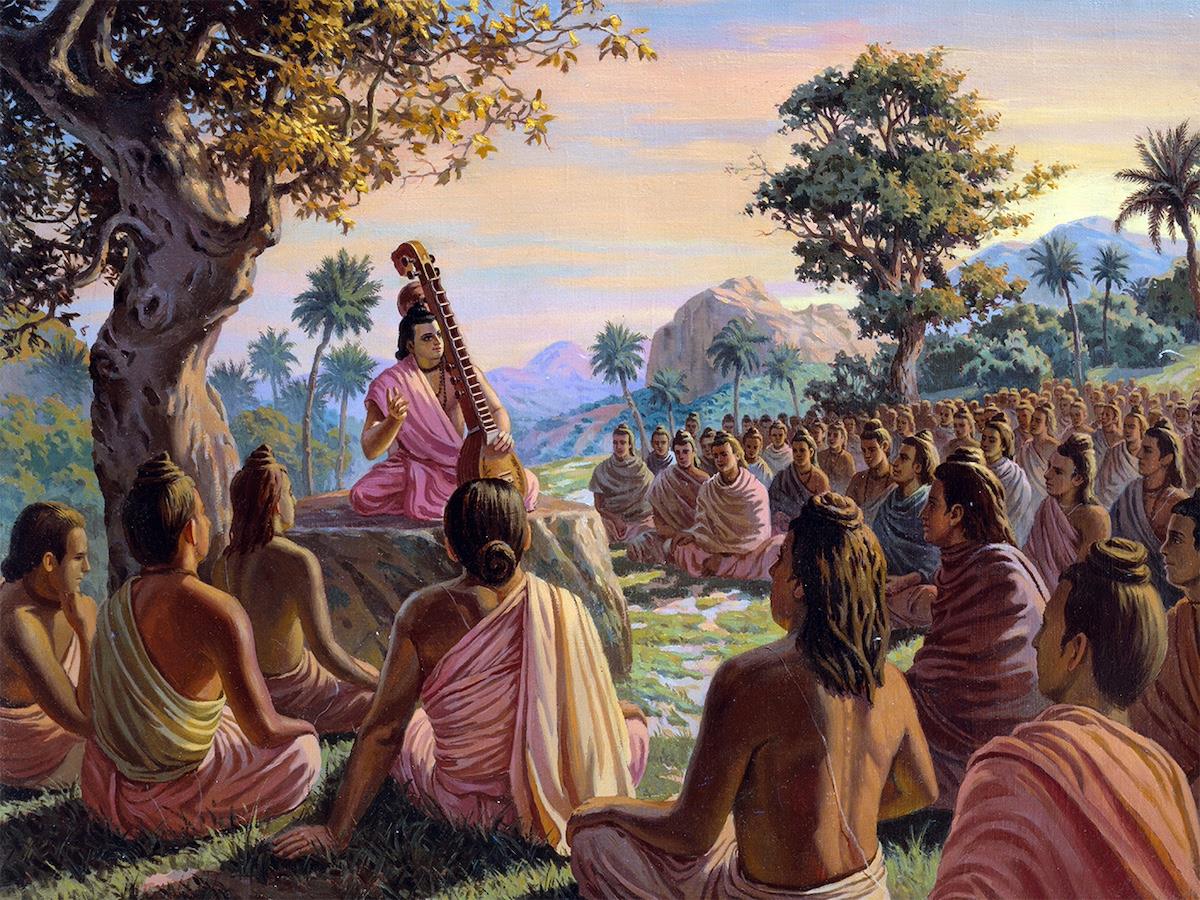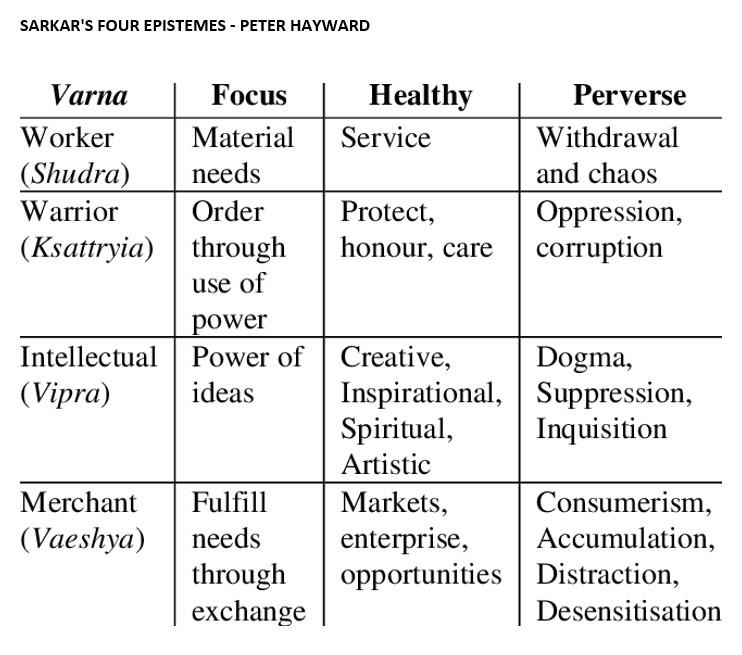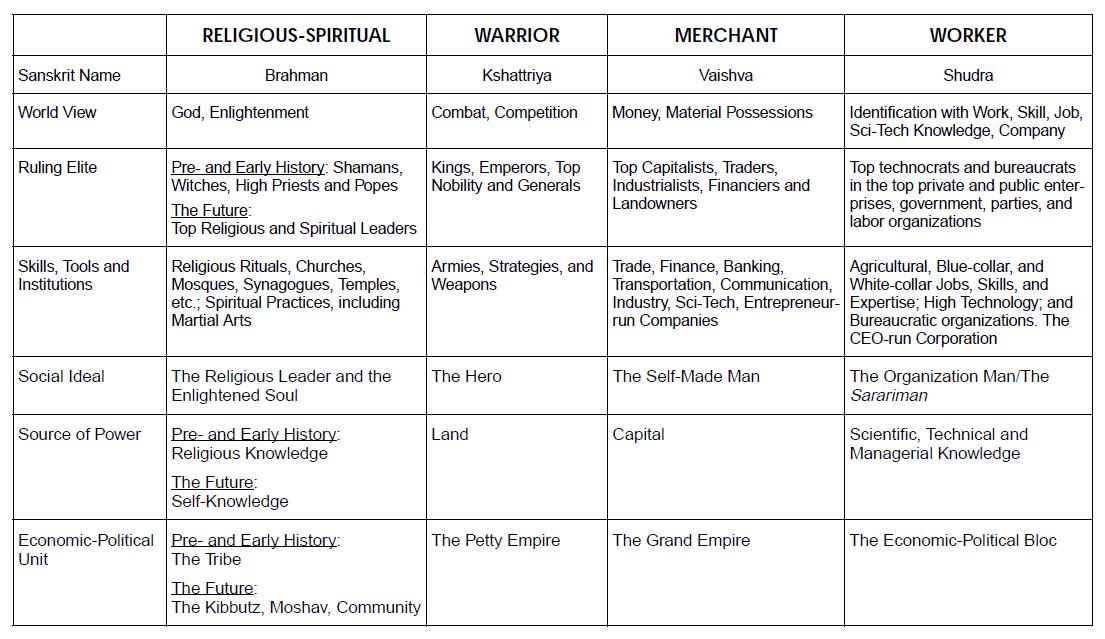
Indian Cosmology, Industry 4.0 And The Coming End Of Work
The varna concept later devolved into a rigid caste system (jāti), used for Political oppression, but its original framework remains valuable for understanding the modern world. The varna concept suggests that communism failed because it sidelined the merchants, and that capitalism is failing because it sidelines the workers.
Scholars have drawn parallels between the varna concept and Marxism, equating class struggle with“caste struggle.” They equate workers and merchants in the varna concept with labor and capital in Marxism. However, the four categories of the varna concept offer a more nuanced view of society and have a cosmological basis.
Varna is part of an ancient Vedic prophesy. The four varnas take turns leading society. Each varna stage advances the human condition to the next level until it reaches a new spiritual age. The prophesy is comparable to the Second Coming in Abrahamic traditions. Both offer a vista to a better world to come.
But the true value of the varna system today is that it offers a different lens for looking at the contemporary world with its many apparent contradictions, complexities, and conflicts, including the seemingly intractable conflict between the US and China.
VarnaThe concept of varna was first mentioned in the Vedas around 1500 BCE. The ancient sages observed that people naturally gravitate toward specific roles within society. They classified these roles into four generic types or varnas: merchants, workers, protectors, and teachers.
Central to the varna concept is the idea that humanity moves through cycles in which each varna plays a leading role in advancing civilization, from barbarism to enlightenment. Once this cycle is completed, it starts again, reflecting the Vedic view of time as cyclical.
The four varnas cover all social human activity and are interdependent. All four are essential to a functioning society, but they hold distinct worldviews and have different desires, needs, and values.
– Teachers/Spiritual Seekers (Vipra): Enlighten others by valuing the mind, cultivating spiritual and scientific knowledge, and creating laws enforced by warriors.
– Warriors/Protectors (Kshatriya): Driven by competition, they value strength and valor, safeguarding society through order and security.
– Merchants/Entrepreneurs (Vaeshya): Skilled in managing resources, they advance society's material prosperity.
– Workers (Sudra): Focused on practical labor, empathetic with others. They value security, but given their numbers, they can bring the system down if their needs are not met.
Varnas can overlap in each individual. Most people have traits of two or more varna types. A merchant type can also have a spiritual inclination, and a worker type can also have a merchant impulse. But one of the four varnas typically predominates in each individual.
The malignant caste system that developed in later centuries was the result of politics and human vanity. In the words of modern spiritual teacher Sadhguru, things went wrong“when the goldsmith started to feel superior to the blacksmith.” The caste system transformed the varnas from psychological profiles to lineages.
Modern applicationsDespite the varna concept being tainted by centuries of abuse, it has found modern, constructive applications.

Legal Disclaimer:
MENAFN provides the information “as is” without warranty of any kind. We do not accept any responsibility or liability for the accuracy, content, images, videos, licenses, completeness, legality, or reliability of the information contained in this article. If you have any complaints or copyright issues related to this article, kindly contact the provider above.
Most popular stories
Market Research

- Manuka Honey Market Report 2024, Industry Growth, Size, Share, Top Compan...
- Modular Kitchen Market 2024, Industry Growth, Share, Size, Key Players An...
- Acrylamide Production Cost Analysis Report: A Comprehensive Assessment Of...
- Fish Sauce Market 2024, Industry Trends, Growth, Demand And Analysis Repo...
- Australia Foreign Exchange Market Size, Growth, Industry Demand And Forec...
- Cold Pressed Oil Market Trends 2024, Leading Companies Share, Size And Fo...
- Pasta Sauce Market 2024, Industry Growth, Share, Size, Key Players Analys...






























Comments
No comment